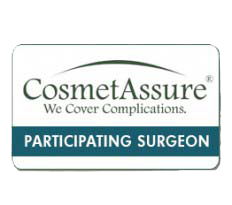You’ve heard the stories…
You’ve seen survivors share their explant stories on social media, but WHAT is BII exactly?
There may have never been a more controversial topic within the plastic surgery world, so let us take a deeper look at the signs and symptoms of breast implant illness. Essentially, there are two camps of surgeons, those that believe breast implants are completely safe for every individual and those that believe breast implants can and do react negatively in certain people. Part of the reason for this divide may be that symptoms of the condition can be vague and include things as common as fatigue, joint and muscle pain, sleep disturbances and headaches. However, it is when these symptoms become chronic and overwhelm a woman’s daily life that one must consider the possibility of breast implant illness. Unfortunately, breast implant illness, or BII, is a diagnosis of exclusion, meaning there are no specific tests or workups for the condition. Rather, tests for other conditions must be performed which, if negative, will further point to BII as a possible explanation for the symptoms.
Many women self-diagnose themselves with BII and then present to a surgeon for a discussion on the possibility that their implants are making them sick. There is also an increasing number of women presenting to Dr. Tarola having been referred by another physician who recommended removal of their breast implants. Some women suffer from symptoms typical of breast implant illness prior to their augmentation but notice that the symptoms intensified following the procedure. Other women notice a rapid or gradual decline in their health following their augmentation. For women in either of these groups, the first step would be to seek an evaluation by a primary care physician. If an evaluation and testing do not provide a diagnosable explanation for the health decline, this is when you should see a specialist to discuss symptoms and the possibility of breast implant removal.
What is breast implant illness?
Breast implant illness refers to a constellation of constitutional symptoms that develop or worsen after undergoing breast augmentation with saline or silicone breast implants. Among the most common symptoms are fatigue, muscle and joint pain, memory and concentration problems, insomnia, rashes, anxiety, depression and the development of autoimmune or autoimmune-like conditions. There have been several studies conducted over the past several decades, but the problem is that the studies do not present level 1 or 2 evidence because of certain study flaws. However, over the past several years, more and more women have come forward on social media to share their experiences with breast implant illness and the improvement in their symptoms after they removed their breast implants.
Although it is important to note that not all women experience symptom improvement following the removal of their implants, the majority of women whose symptoms developed following breast augmentation seem to achieve the most significant improvement following the removal of their breast implants.
Breast implant illness should be distinguished from other well-known mechanical complications of breast implants, including capsular contracture, breast or chest wall pain and breast implant rupture. Unlike the latter conditions, breast implant illness is not yet recognized as an official medical diagnosis and, therefore, does not have a diagnosis code. As a result, breast implant illness cannot be presented to medical insurance companies as a reimbursable reason for the breast implant removal procedure. Additionally, even though a patient may have a condition with a known diagnosis code such as capsular contracture, rupture or pain, insurance still may not reimburse for the breast implant removal procedure if the implants were originally placed for a cosmetic purpose.
Treatment of breast implant illness
Breast implant illness is controversial and not well understood. As a result, individual plastic surgeons have different approaches for its treatment.
Those plastic surgeons with the most experience treating breast implant illness take a similar approach, recommending not only removal of the breast implant but also the surrounding capsular scar tissue. The capsule is a layer of scar tissue that the body forms around the breast implant as a way to wall off the breast implant, a foreign body. The same process occurs around any foreign body, whether it be a pacemaker or joint replacement. Many women think that they have two capsules if, at some point, they had their breast implants replaced. However, this is seldom the case. The only time the patient would have two capsules as a result of breast implant replacement is if the surgeon placed the new implants in a separate pocket, such as moving from above to below the muscle or vice versa, and the old capsule wasn’t removed. A normal capsule is extraordinarily thin and completely transparent.
The procedure to remove the capsular scar tissue is called a capsulectomy. A capsulectomy can either be partial or complete. Completely removing the capsule in a single piece is called an en bloc total capsulectomy, whereas complete removal in more than one piece is called a total capsulectomy. One situation where an en-bloc total capsulectomy may not be possible is when a patient has a submuscular breast implant location with completely normal and extremely thin capsular tissue that is densely adhered to the underlying ribs. In these cases, it is still possible to remove all of the scar tissue, but it involves a more tedious dissection of the portion of the capsule that is adhered to the ribs.
Dr. Tarola’s Approach
Over the years, Dr. Tarola has taken a different stance on breast implant illness. Like many other plastic surgeons, he was initially unsure of the condition as it was not something taught in residency or accepted within the plastic surgery community. As he saw more and more patients experiencing similar symptoms and improvement following the removal of their breast implants, he began researching the condition further. He found numerous articles published over the past several decades, not necessarily in plastic surgery journals but rather internal medicine and rheumatology journals. It was clear that there are a number of patients who do not respond well to the presence of the breast implants and need them removed to function properly.
As mentioned above, surgeons have different approaches to treating breast implant illness. Dr. Tarola has seen the greatest improvement in patients who have a total capsulectomy along with the removal of their breast implants. His goal in surgery is to perform an en bloc total capsulectomy, only reverting to a total capsulectomy if complete removal of the capsule in one piece is not possible. A total capsulectomy is a much more involved process that carries a greater risk than a simple breast implant removal. Although en bloc total capsulectomy is Dr. Tarola’s recommendation for treatment, as part of the informed consent process, both options are presented to patients as it is the patient who has to make the final decision on which procedure she undergoes. It is thought that removing the capsule will remove all residual silicone material, biofilm (a thin, slimy film of bacteria that adheres to a surface), or other substances from the body allowing the patient to more fully recover, as well as provide the patient the utmost peace of mind.
It is true that Dr. Tarola still places breast implants for cosmetic and reconstruction patients?
Although he believes that breast implant illness is a real condition, it appears to affect a relatively small percentage of women with breast implants. What sets him apart from the majority of plastic surgeons is that he emphasizes breast implant illness as a potential complication of breast augmentation/reconstruction with all of his patients considering the procedure. To date, he has only had one of his breast augmentation patients return with symptoms consistent with breast implant illness. The patient underwent a fairly extensive workup, including a referral to a breast surgeon, to rule out other conditions to explain her ailments. When that workup proved inconclusive, the patient and Dr. Tarola ultimately decided it was in the patient’s best interest to remove her breast implants and perform a capsulectomy. Following that procedure, the patient experienced a gradual but complete improvement in her symptoms.
If you are convinced that you have BII or interested in breast implant removal, we are here to help!
Give us call at (615) 713-1695 to schedule your consultation. Virtual consults are also available upon request.




